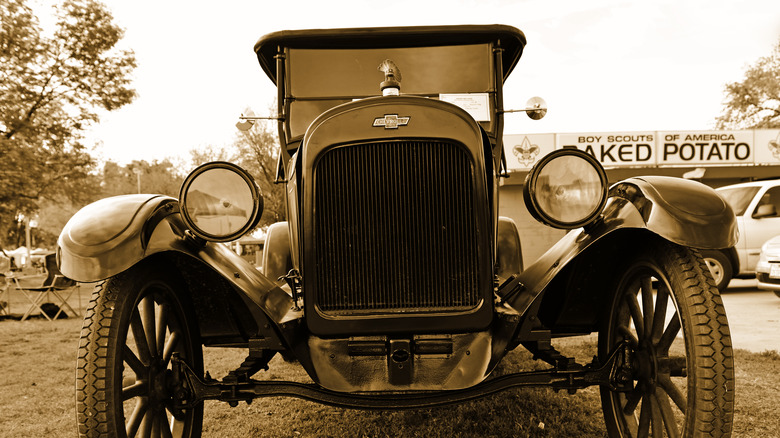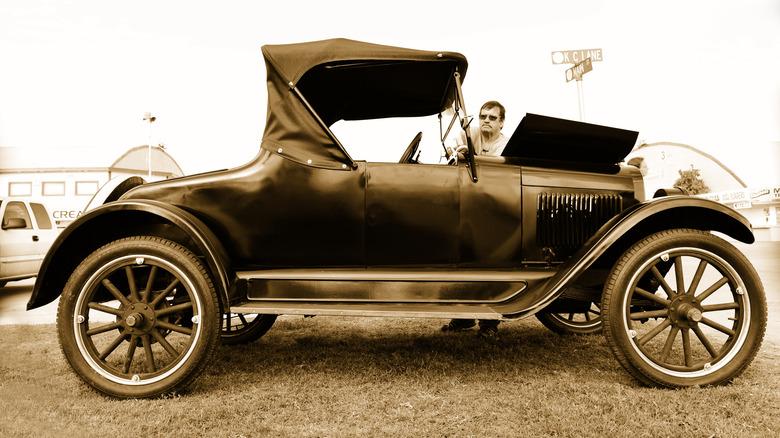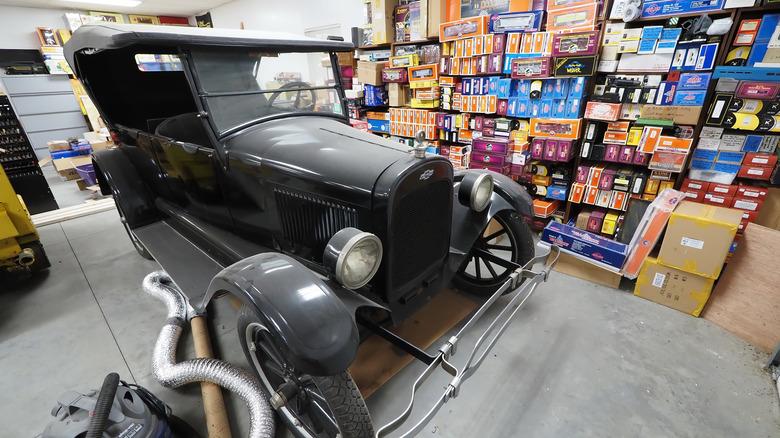Why Chevrolet's Copper-Cooled Car Was A Major Failure
In the midst of the chaotic modern-day automotive marketplace, with autonomous cars seeing setbacks on key integrations, ongoing debates about fuel choice – battery-driven electric? Hydrogen fuel cell? Solar power? – and the question of how sustainable personal cars even are as a concept, it might seem soothing to cast our eyes back to the early days of widespread car ownership, with domestically made rattletraps bumping cheerfully along at sedate speeds.
Or not. As MotorTrend reports, the U.S. car marketplace has always had its share of disasters. One failure, the catchily alliterative Copper-Cooled Chevrolet, made a valiant attempt to put General Motors clean out of business decades before it became the country's largest employer (with a market share of 44% of all U.S. auto manufacturing in 1941, per Britannica, and more than double the workforce of the next largest American enterprise in 1955, according to 247WallSt).
The foolish, doomed engineering innovation at fault? An air-cooled engine. In a masterclass on "right idea, wrong implementation," an engineering solution that would go on to power everything from your lawnmower to the original Porsche 911 nearly bankrupted GM in the 1920s.
Mr. Kettering's car
The story starts with Charles Kettering, a bona fide engineering genius behind everything from the modern automotive electrical system to the electric cash register (via MotorTrend). Unfortunately, the Copper-Cooled Chevrolet he designed would have more in common with other inventions of Kettering's, like leaded gasoline and the ozone-shredding coolant Freon.
In 1919 Kettering was head of the Dayton Engineering Laboratories Company, better known to gearheads as Delco, when GM asked him for the moon on a stick. GM was tired of being beaten in every market by Henry Ford's iconic Model T. The manufacturer wanted to stick it to its aging rival with a hot new engine that was lighter, faster, and cheaper than Ford's, all at once.
Kettering had an idea. Water-based cooling systems had always been awkward, bulky things. Water rusted metal, condensed in dangerous places, contaminated fuel lines, and turned to scalding steam when exposed to heat. Instead, thought Kettering, he'd start with a friendlier fluid — say, ambient air — and use a more conductive metal to get the heat out: copper! Replacing water-based cooling with a simple structure of copper fins would check every box on GM's list: lighter, faster, cheaper. It wasn't even untested technology. Luxury cars like the Franklin 10B were using similar systems with iron fins to displace heat (via Hemmings).
GM loved it. The company went all in, buying Delco outright and committing to a full range of copper-cooled cars. At the time GM was less a single company than a holding group for five otherwise independent businesses: Buick, Cadillac, Chevrolet, Oakland (later Pontiac), and Oldsmobile. Per Motor Trend, GM originally planned to replace three of the five product lines with copper-cooled models.
Change born of catastrophe
Unfortunately, flaws in Kettering's design had already begun to show. Prototypes failed their first round of tests. Oakland general manager Fred Hannum said the vehicles would need six months of reworking just to function. But Kettering and GM director Alfred Sloan remained sold on the idea. Manufacturing went ahead.
When GM put its first copper-cooled cars on pavement, however — well, it's tempting to say the wheels came off. In fact, that was almost the only terrible thing that didn't happen to copper-cooled cars. Between 60 and 70 degrees ambient temperature, the copper fins outright failed to conduct heat. Engines melted soft copper lines. Electrical systems shorted against the more conductive metal. In the end, the car built to beat the Model T halted production at just 500 models (via HowStuffWorks).
The Copper-Cooled Chevrolet was revolutionary, just not the way its inventors or purveyors intended. Alfred Sloan learned from his failure, reorganizing GM to standardize design and put engineering under greater scrutiny. Before long, Buick, Cadillac, and the rest weren't separate companies anymore — just brands selling variations of core designs approved by their GM bosses (via Automotive Hall of Fame). The Copper-Cooled Chevrolet may have failed to invent the modern car, but its failure invented the modern car company.


